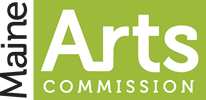THOUGHT MADE VISIBLE: SELECTIONS FROM THE ZILLMAN ART MUSEUM COLLECTION
- February 16, 2024
Zillman Art Museum (ZAM) announces New Exhibition
BANGOR – The Zillman Art Museum - University of Maine, located at 40 Harlow Street in Bangor, ME, opens a new
exhibition that will run January 19 - May 3, 2024. ZAM is open Tuesday-Saturday from 10 am - 5 pm and brings modern and
contemporary art to the region, presenting approximately 21 original exhibitions each year. Admission to the Zillman Art
Museum is free in 2024 thanks to the generosity of Birchbrook.
THOUGHT MADE VISIBLE: SELECTIONS FROM THE COLLECTION
January 19 - May 3, 2024
Conceptual and Minimalist art movements emerged from the abstract art of the 1940s and 1950s. In turn, additional subgenres
have evolved from these conceptual and minimal principles such as Hard-Edge Painting and Op Art. Thought Made
Visible highlights selected pieces from the Zillman Art Museum’s permanent collection that share an ideology of working with
a thought or concept visually to ultimately create an artwork. Sol LeWitt, regarded by many art historians as the founder of
Conceptual and Minimal art, believed that the idea of the art was of greater importance than the execution of the final aesthetic
product. He believed that even a thought could be a work of art. LeWitt investigated line and shape through the application
of variation and repetition as seen in Lines from Sides, Corners and Center and Arcs from Four Corners. His contemporary,
Robert Mangold, explored similar ideas with a focus on symmetry and geometry. In his four untitled woodcuts included in the
exhibition, Mangold depicts a sequence of double trapezoids that contain other geometric shapes and lines.
Other artists associated with Hard-Edge Painting include Joseph Albers, Ellsworth Kelly, and Frank Stella. For over twenty
years Albers was consumed with exploring the format of concentric squares. His series Homage to the Square includes over
a thousand paintings and prints of squares with differing color combinations. One could argue that Albers’ interest in the
chromatic interactions of the squares and the resulting optical effects influenced the creation of Op Art. In Optical Art (Op Art)
images create visual movement, vibration, warping and even hidden images through the construction of lines and shapes.
Bridget Riley is a principal figure of the Op Art movement and the set of screen prints on view here highlight her use of lines to
create undulating motion.
New generations of contemporary artists such as Anna Hepler continue to explore these themes. Hepler works with shapes
and forms that are informed by geometry and space. Her sculpture’s Center and Fold, as well as the lithograph Whorl, are
reduced to fundamental shapes with details that can be explored by patient observation.
The artists in this exhibition share the presentation of an idea being translated into a visual vocabulary, rather than the basic
elements of visual design. The artworks offer the viewer an opportunity for contemplation.
###
Filter Press Releases
Contact Information
Kathryn Jovanelli
40 Harlow StreetBangor ME 04401-5102
207-581-3370
ude.eniam@jnyrhtak
www.zam.umaine.edu
